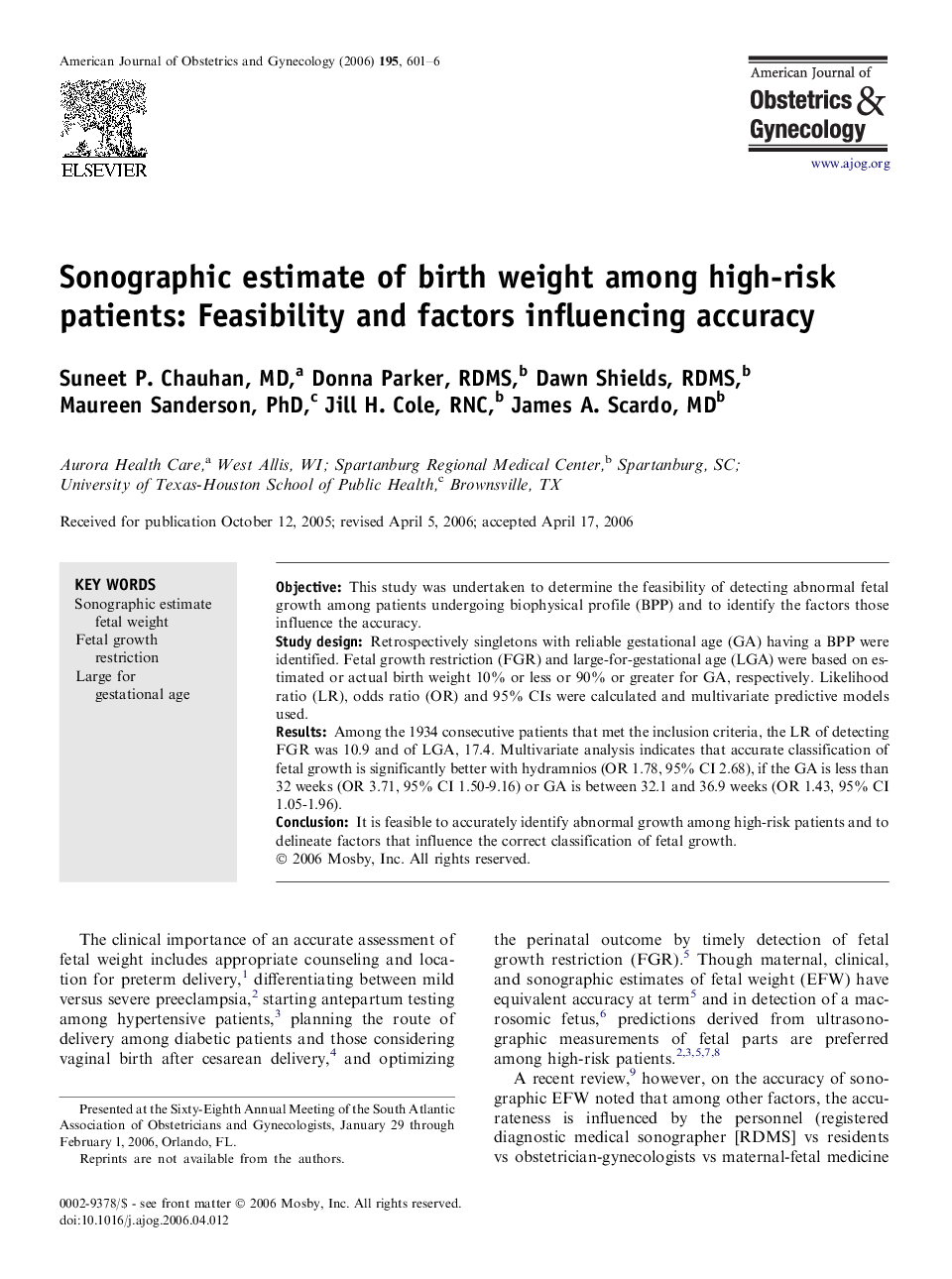| کد مقاله | کد نشریه | سال انتشار | مقاله انگلیسی | نسخه تمام متن |
|---|---|---|---|---|
| 3440660 | 1595026 | 2006 | 6 صفحه PDF | دانلود رایگان |

ObjectiveThis study was undertaken to determine the feasibility of detecting abnormal fetal growth among patients undergoing biophysical profile (BPP) and to identify the factors those influence the accuracy.Study designRetrospectively singletons with reliable gestational age (GA) having a BPP were identified. Fetal growth restriction (FGR) and large-for-gestational age (LGA) were based on estimated or actual birth weight 10% or less or 90% or greater for GA, respectively. Likelihood ratio (LR), odds ratio (OR) and 95% CIs were calculated and multivariate predictive models used.ResultsAmong the 1934 consecutive patients that met the inclusion criteria, the LR of detecting FGR was 10.9 and of LGA, 17.4. Multivariate analysis indicates that accurate classification of fetal growth is significantly better with hydramnios (OR 1.78, 95% CI 2.68), if the GA is less than 32 weeks (OR 3.71, 95% CI 1.50-9.16) or GA is between 32.1 and 36.9 weeks (OR 1.43, 95% CI 1.05-1.96).ConclusionIt is feasible to accurately identify abnormal growth among high-risk patients and to delineate factors that influence the correct classification of fetal growth.
Journal: American Journal of Obstetrics and Gynecology - Volume 195, Issue 2, August 2006, Pages 601–606